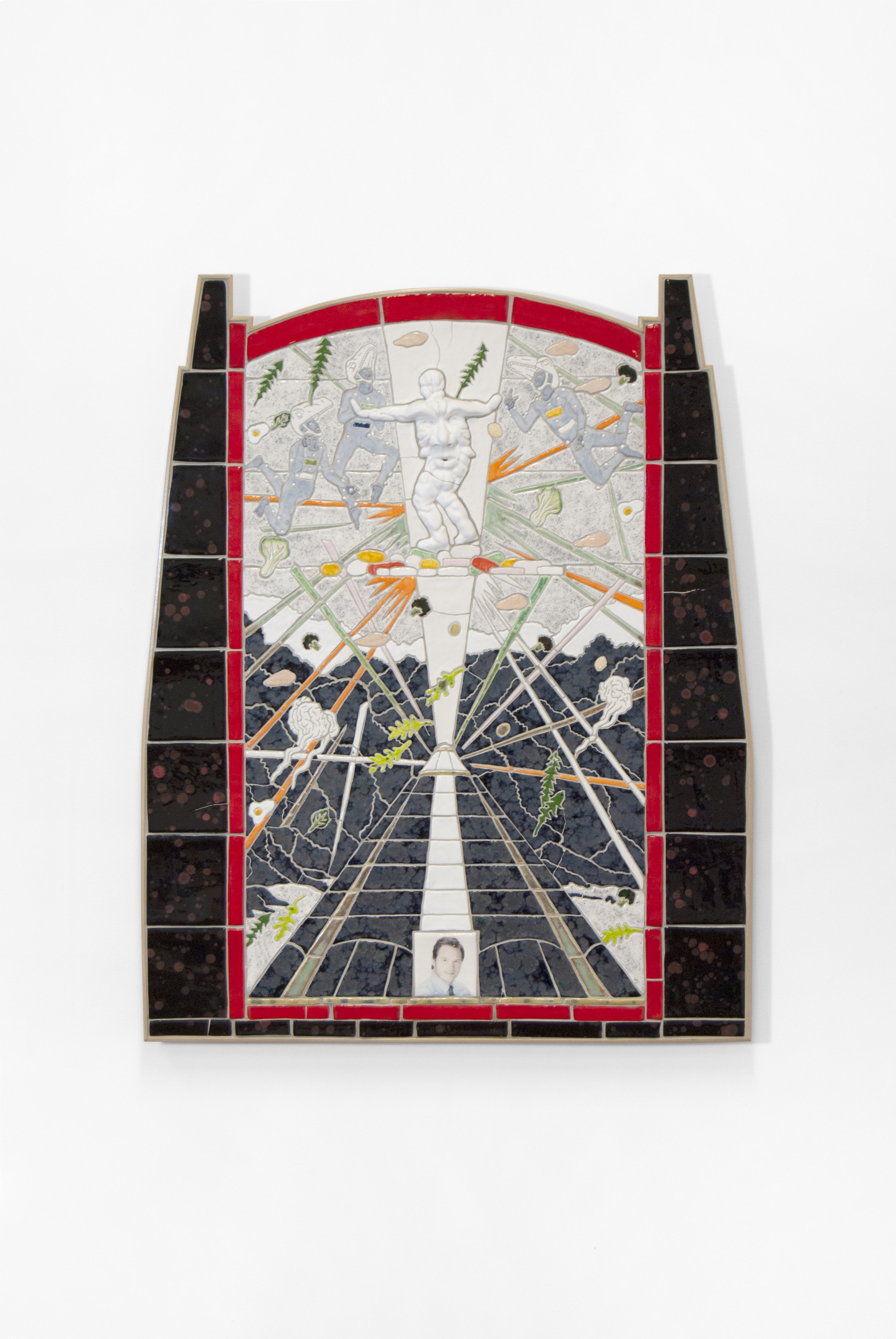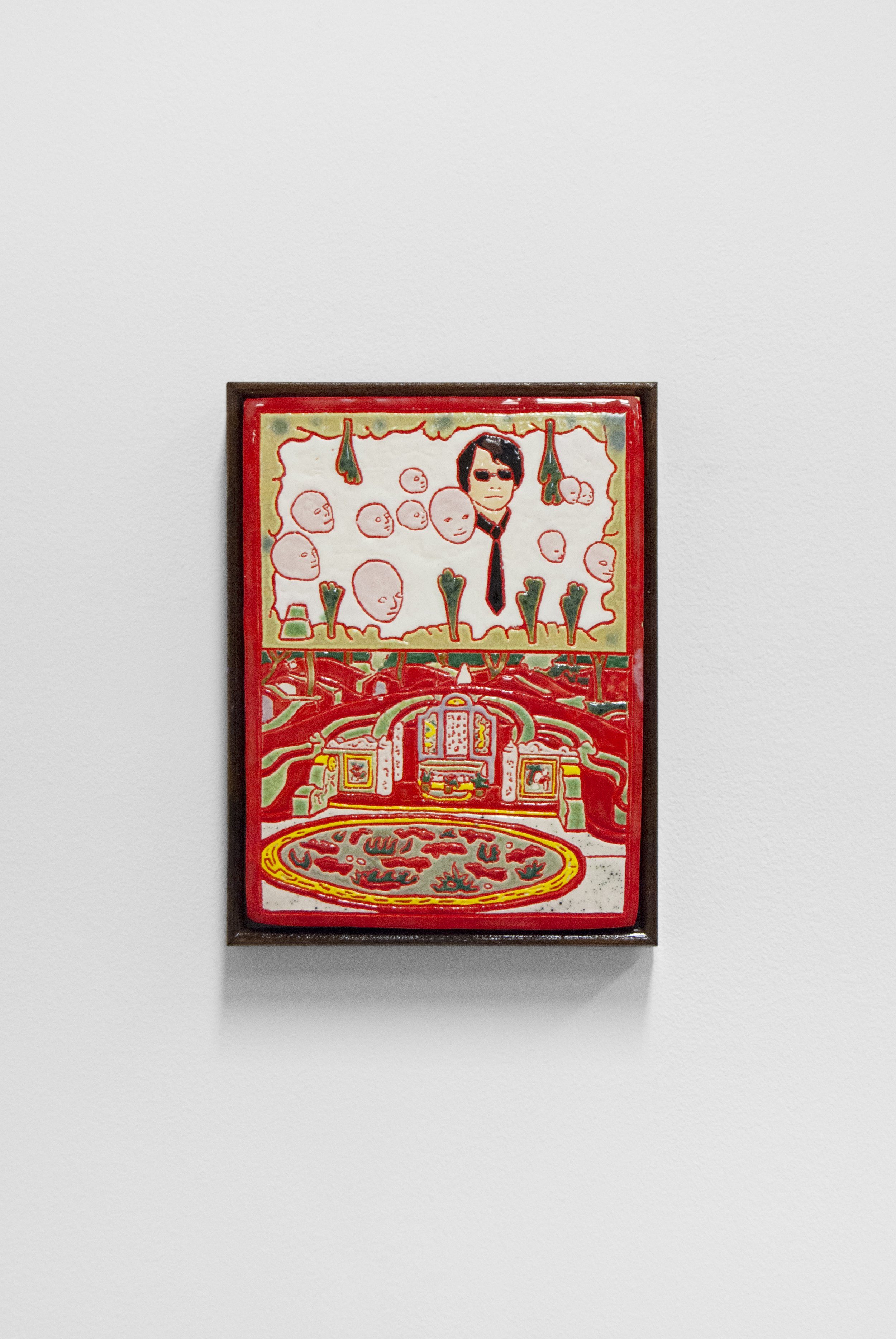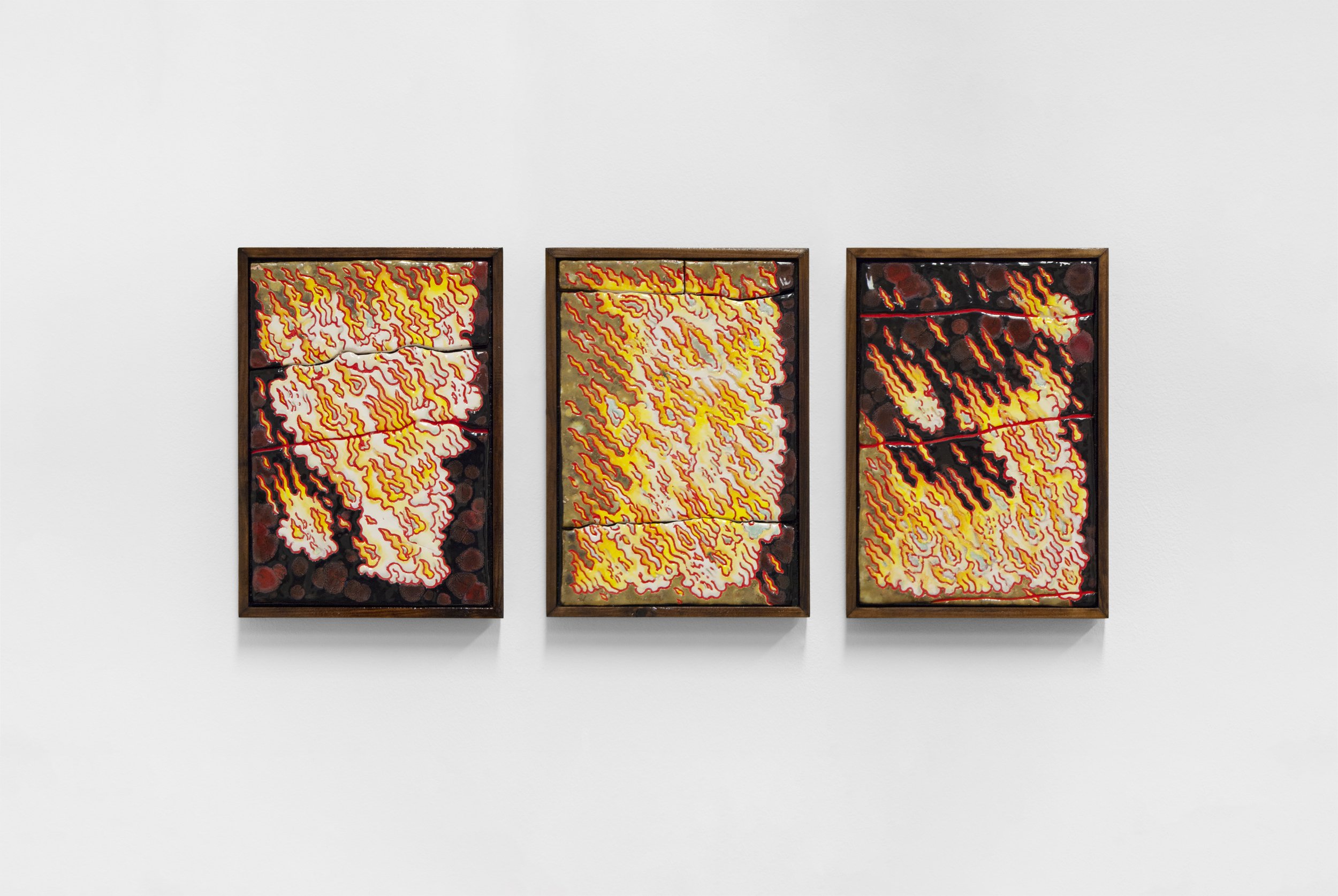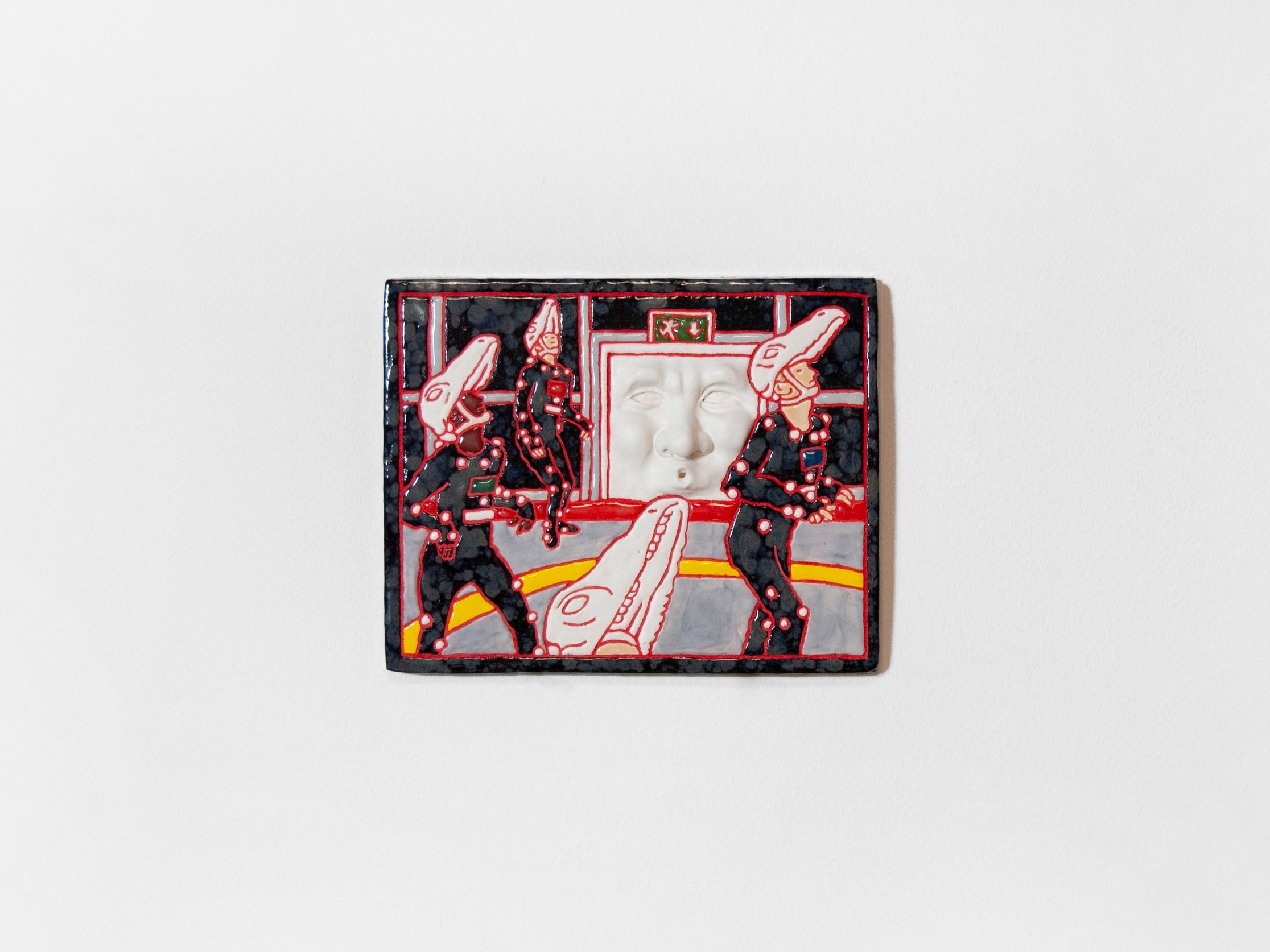ASIA NOW
Special Project: Kara Chin
Special Project: Zohreh Zavareh
October 20 - 23, 2022
La Monnaie de Paris - 11 Quai de Conti 75006
For its first participation at the Paris Asian Art Fair, Asia NOW, Hatch is proud to present a solo presentation of the British- Singaporean artist, Kara Chin.
The project Fallen Kingdom will look take a closer look at the systemic battle between primitive and modern civilizations, depicting cataclysmic scenarios from the Jurassic World movie franchise. Chin interrogates throughout her outlandish fiction and provocative visual responses, the likely deceptive condition of progress and technology and it’s consequences on our environmental eco-system.
Alongside of Chin’s solo presentation, the platform will present the work of the Iranian artist Zohreh Zavareh as part of Nicolas Trembley’s carte blanche: Mingei Asia Now.
Exhibition view from Kara Chin solo presentation, 'Fallen Kingdom' at ASIA NOW with HATCH, Monnaie de Paris, Paris, 20223. Photo: Ronan Nouri. Courtesy of the artist and HATCH.
Exhibition view from Kara Chin solo presentation, 'Fallen Kingdom' at ASIA NOW with HATCH, Monnaie de Paris, Paris, 20223. Photo: Ronan Nouri. Courtesy of the artist and HATCH.
Fallen Kingdom
Kara Chin
ASIA NOW - Special Project
For her first participation at the Paris Asian Art Fair, ASIA NOW, the British- Singaporean artist Kara Chin collaborates with Hatch for a solo presentation, ‘Fallen Kingdom’. In alignment with the fair’s 8th edition thematic Fires of Joy which combines the arts of fire emblematic of coinage and metal with the arts of ceramics, Chin’s latest body of works mostly evolves around the medium of ceramic.
The Fallen Kingdom series evokes the artist’s search for irrationality in an alternative world by taking a closer look at the systemic battle between the primitive and the modern, as a utopian anthropological inquiry. Using direct references and characters from the ‘Jurassic World’ movie franchise, the artist interrogates the likely deceptive forms and condition of progress and technology. This series is portrayed as a satirical take on a time where the continued process of industrialization and increased use of technologies results in the inevitable concomitant destruction of earth’s natural resources.
Through her sculptural installations and animations she interrogates technology’s unstable future via outlandish fictions and provocative visual responses and deploys familiar and estranged motifs to create visual juxtapositions, leaving the viewer with a distinct sense of ambivalence, softened by their playful nature.
Here, Chin aims to depict the present from a future perspective, creating parallel between fiction and reality, using subjects and references from popular culture associated with historical sources, throughout a medium that his reminiscent of the past.
The medium of ceramic, an organic material with a long history of human use, readily refers to both nature and culture, to historical as well as geological time. Connections emerge, linking human activity and natural processes, deliberation and chance, what is seen with what is sensed. This process gives the sculpture an organic vitality and a temporal dimension that suggests the forces of both growth and decay. It is as if the head were an archaeological artifact from some mysterious civilization. We understand that it has meaning, but the precise nature of that meaning is unclear.
Fallen Kingdom receives many temporalities through subject, medium and composition. Creating surprising contrasted perspectives, such as depicting American movie stars as deities or the collapsing environmental eco-system of fragile islands such as Hawaii with the very anthropocentric worldview of human supremacy implied throughout the Jurassic World movie franchise.
Chin, by combining cross-generational historical and contemporary references, heralds a new visual approach to figuration within the ceramic realm and leads to disrupt, deregulate and move beyond its classical codes to produce spectacular sculptures that are reminiscent of computer-generated 3D images. In sum, casting a sculptural vocabulary far removed from any general “domestic” function attributed to the medium.
Kara Chin, The Park is Gone, from the Fallen Kingdom series, Glazed ceramic, grout, pigment, timber, 80 x 128 x 3.5 cm. Photo: Kara Chin. Courtesy of the artist and HATCH.
Kara Chin, Chris Pratt’s Torso Ascends, from the Fallen Kingdom series, glazed ceramic, grout, pigment, timber, 90 x 75cm. Photo: Kara Chin. Courtesy of the artist and HATCH.
Kara Chin, Ishiguri’s Telenoid and an Unrelated Tomb, from the Fallen Kingdom series, glazed ceramic, grout, pigment, timber, 14.5 x 19 x 4 cm. Photo: Kara Chin. Courtesy of the artist and HATCH.
Kara Chin, Fire 1, Fire 2, Fire 3, From the Fallen Kingdom series, glazed ceramic, grout, pigment, timber, 16 x 22 x 2 cm. Photo: Kara Chin. Courtesy of the artist and HATCH
Kara Chin, The Raptors, From the Fallen Kingdom series, glazed ceramic, grout, pigment, 16.5 x 13 cm. Photo: Kara Chin. Courtesy of the artist and HATCH
Kara Chin, PEMF, From the Fallen Kingdom series, glazed ceramic, grout, pigment, 23 x 16 cm. Photo: Kara Chin. Courtesy of the artist and HATCH
Mingei ASIA NOW
Zoreh Zavareh
ASIA NOW - Nicolas Trembley’s Carte Blanche
A carte blanche has been offered to Asia Now’s guest curator for the 8th edition of the fair to Nicolas Trembley.
Trembley’s exhibition explores the Mingei heritage, a Japanese art movement of the early 20th century that valued the beauty and simplicity of folk art, in particular ceramics. It pairs historical pieces by Japanese craftsmen with ceramics by a dozen contemporary artists inspired by Mingei.
Inspired by the 19th century Arts and Crafts movement in Europe, the concept of Mingei (民芸),
was established in 1925 by the Japanese philosopher and aesthete, Sōetsu Yanagi (1889– 1961) together with potters Kanjiro Kawai and Shoji Hamada. Variously translated into English as “folk crafts” or "popular art", the name derives from the Japanese words "minshu" (people) and "kogei" (crafts). The philosophical ethos of Mingei champions the everyday, ordinary and utilitarian objects created by nameless and unknown craftsmen.
The late rediscovery in contemporary art of certain traditional techniques such as ceramics, baskets or weavings that were crucial in the Mingei movement allows the exhibition to juxtapose historical and contemporary works. If the Mingei movement was essentially Japanese, Mingei Asia features works from all the continent.
With : Ai Weiwei (Galerie Urs Meile); Mitsuko Asakura (Sokyo Gallery); Ronan & Erwan Bouroullec (Private Collection); Shoji Hamada (Sokyo Gallery); Kazunori Hamana (Blum & Poe); Yochiro Kai (Private Collection); Kanjiro Kawai (Sokyo Gallery); Minjung Kim (Almine Rech Gallery); Jiro Kinjo (Sokyo Gallery); Lee Hun Chung (Pierre Marie Giraud); Lee Ufan (the Sèvres Manufacture); Matthew Lutz-Kinoy (Private Collection); Prabhavathi Meppayil (Pace Gallery); Mari Minato (Sokyo Gallery); Isamu Noguchi (LAFFANOUR Galerie Downtown Paris); Mai-Thu Perret Shahpour Pouyan (Galerie Nathalie Obadia); Tsujimura Shiro (Galerie Mingei); Natsuko Uchino (Galerie Allen); Wang Keping (Galerie Nathalie Obadia); Aiko Watanabe (Complete Works); Sori Yanagi (LAFFANOUR Galerie Downtown Paris); Zohreh Zavareh (Hatch).








